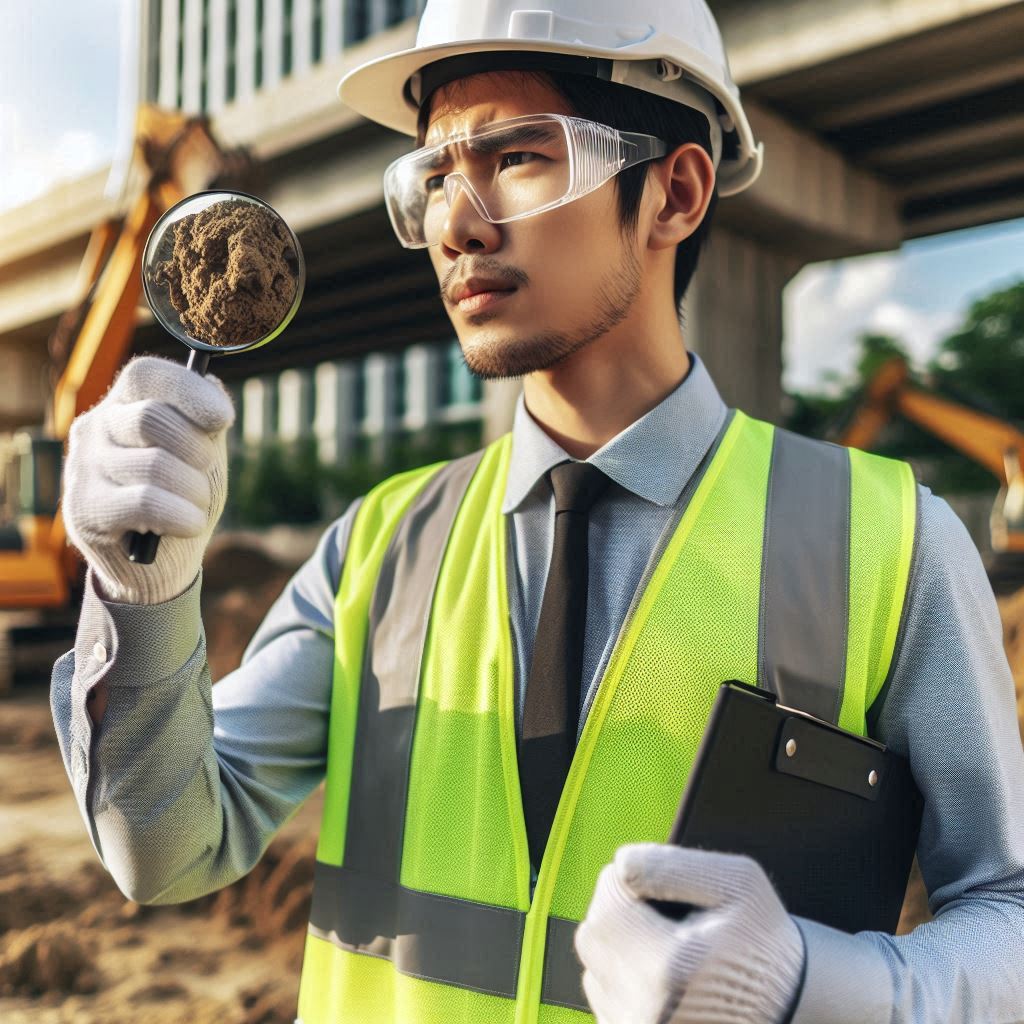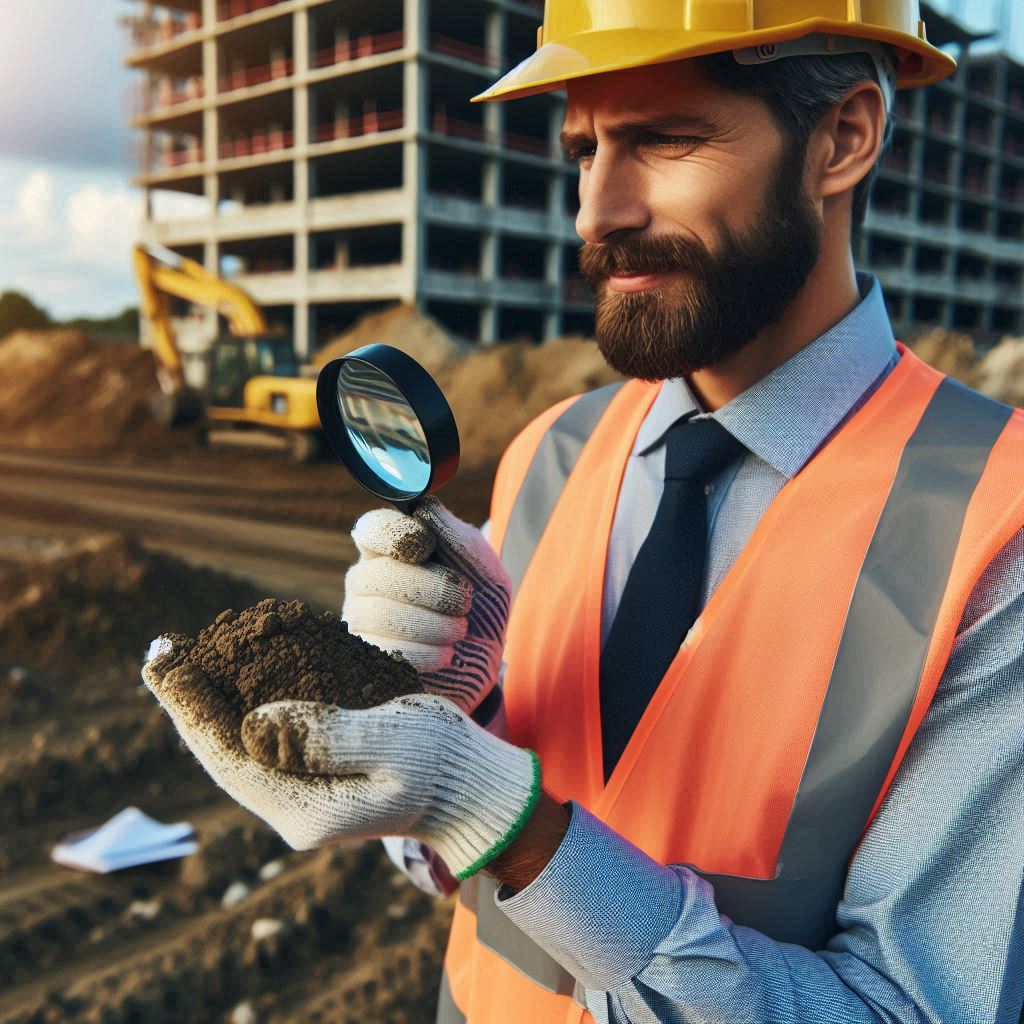Introduction
Geotechnical engineering focuses on the behavior of soil and rock in construction.
It plays a vital role in ensuring the stability and safety of structures.
By understanding the properties of the ground, engineers can design foundations and slopes that support buildings and infrastructure.
Ground improvement involves enhancing the physical properties of soil to make it more suitable for construction.
This process is crucial in areas where the natural ground conditions are inadequate.
Through various techniques, ground improvement strengthens weak soils, controls settlement, and reduces the risk of ground failure.
Ground improvement techniques include compaction, grouting, and soil stabilization.
Each method targets specific soil issues, improving its load-bearing capacity and durability.
For example, compaction increases soil density, while grouting fills voids and strengthens the soil matrix.
The role of ground improvement in geotechnical engineering is significant.
It ensures that the ground can support new construction projects and adapt to changing conditions.
This process mitigates risks associated with poor soil quality and enhances the performance of foundations and retaining structures.
History of Ground Improvement Techniques
Traditional Methods
Compaction remains a cornerstone in ground improvement.
This technique involves densifying soil to increase its load-bearing capacity.
Engineers use vibratory rollers, impact rammers, or static machines to achieve compaction.
Proper compaction reduces soil permeability and increases its shear strength.
This method is especially effective for granular soils, which compact well under mechanical pressure.
Grouting is another classic technique used to improve soil conditions.
It involves injecting a grout mixture into the ground to fill voids and bind particles.
This method strengthens weak soils and mitigates liquefaction risks.
Various grouting materials include cement, chemical solutions, or even a mix of both.
Grouting proves useful in stabilizing foundations and preventing subsidence.
Newer Methods
Soil stabilization represents a significant advancement in ground improvement.
This method alters the soil‘s properties through the addition of stabilizing agents.
These agents can be lime, cement, or bituminous materials.
Stabilization enhances soil strength, reduces plasticity, and improves durability.
Engineers often use this method for road construction and embankments.
Soil reinforcement introduces another innovative approach.
It involves adding materials to soil to increase its load-bearing capacity and stability.
Common reinforcement materials include geotextiles, geogrids, and soil nails.
Geotextiles are synthetic fabrics placed within the soil to provide stability and control erosion.
Geogrids are plastic grids used to distribute loads over a larger area.
Soil nails involve inserting steel rods into the soil to improve its shear strength.
Advances in Ground Improvement Technology
Innovative Techniques Like Jet Grouting and Vibro-Compaction
Ground improvement relies on innovative techniques to enhance soil properties and support construction.
Jet grouting and vibro-compaction are two prominent methods that have revolutionized this field.
Each technique addresses soil weaknesses differently, offering targeted solutions for various geotechnical challenges.
Jet grouting is a versatile technique used to improve soil properties.
It involves injecting a high-pressure grout into the ground to create a solidified soil mass.
This grout mixes with the surrounding soil, forming columns or panels that strengthen the ground.
Jet grouting effectively stabilizes weak soils and can create deep foundations where traditional methods might fall short.
The process can be adapted to different soil conditions and project requirements, making it highly flexible.
Vibro-compaction, on the other hand, focuses on improving soil density.
It uses a vibratory probe that is driven into the ground.
As the probe vibrates, it compacts the surrounding soil, reducing voids and increasing density.
This method is particularly effective for granular soils and loose sands.
By improving soil compaction, vibro-compaction enhances load-bearing capacity and reduces the potential for future settlement.
It is a cost-effective solution for many construction projects requiring soil stabilization.
Use of Geosynthetics and Geopolymer Materials in Ground Improvement
Geosynthetics and geopolymer materials are integral to modern ground improvement techniques.
These materials offer significant benefits in soil stabilization and environmental sustainability.
Geosynthetics include a range of synthetic materials such as geotextiles, geomembranes, and geogrids.
Geotextiles are used to separate, filter, and reinforce soil layers.
They prevent the mixing of different soil types, which can lead to instability.
By improving soil drainage and reducing erosion, geotextiles enhance overall soil performance and support construction activities.
Geomembranes are designed to control fluid movement and prevent leakage.
They are essential for applications like landfills, ponds, and water containment systems.
Geomembranes provide a reliable barrier against fluid migration, protecting both the environment and construction integrity.
Read: Biomedical Engineering: Industry Outlook 2024
Benefits of Ground Improvement
Increased Stability and Durability of Structures
The use of advanced ground improvement techniques, such as jet grouting and vibro-compaction, results in significantly increased stability and durability of structures.
Jet grouting reinforces the soil, creating a more stable foundation for buildings and infrastructure.
It also mitigates potential issues such as differential settlement and soil liquefaction during seismic events.
Similarly, vibro-compaction improves the load-bearing capacity of granular soils, which directly contributes to the stability of structures built on these soils.
By densifying the soil, vibro-compaction reduces the risk of excessive settlement and enhances the long-term durability of foundations.
The application of geosynthetics and geopolymer materials further boosts structural stability.
Geosynthetics, including geotextiles and geogrids, reinforce soil layers and distribute loads more effectively.
Geosynthetics also prevent soil erosion and improve drainage, leading to more resilient and durable structures.
Geopolymers, made from industrial by-products, offer high strength and durability while being environmentally friendly.
They can replace traditional cement in soil stabilization, providing a sustainable option that supports long-term structural performance.
Reduction in Construction Costs and Time
Advanced ground improvement techniques not only enhance stability but also contribute to significant reductions in construction costs and time.
Jet grouting and vibro-compaction streamline the ground improvement process by quickly addressing soil weaknesses.
This efficiency minimizes the need for extensive excavation or soil replacement, which can be costly and time-consuming.
The integration of geosynthetics and geopolymer materials also plays a crucial role in reducing construction expenses.
Geosynthetics simplify soil stabilization and reinforcement, which can lead to lower material and labor costs.
Additionally, their use often accelerates construction schedules by improving soil performance more rapidly.
Read: Biomedical Engineer: Working in Healthcare Tech
Case Studies of Successful Ground Improvement Projects
Examples of Projects Where Ground Improvement Techniques Were Crucial for Success
Ground improvement techniques have become essential in overcoming challenging soil conditions, ensuring the success of major construction projects.
One standout example is the Burj Khalifa in Dubai, the world‘s tallest skyscraper.
The project’s success depended on ground improvement due to the weak, compressible soils beneath the site.
Engineers implemented deep soil mixing and jet grouting to enhance soil strength and stability.
These techniques allowed for a secure foundation capable of supporting the massive structure.
Without such ground improvement, the Burj Khalifa‘s stability and safety would have been compromised.
Another critical example is the Millennium Tower in San Francisco.
The high-rise faced severe settlement issues because of the soft clay and sand underlying the construction site.
Ground improvement methods like soil compaction and grout injections were used to address these issues.
These methods improved the soil’s load-bearing capacity and reduced further settlement.
As a result, the tower‘s performance was stabilized, avoiding potential safety hazards and ensuring the structure‘s long-term reliability.
The Tokyo Bay Aqua-Line project in Japan is a prominent example of ground improvement for underwater construction.
The project involved building a tunnel beneath Tokyo Bay’s soft, saturated sediments.
Engineers employed ground freezing and soil stabilization techniques to strengthen the soil, allowing for safe excavation and construction.
These ground improvement methods were crucial in preventing soil collapse and ensuring the project’s successful completion.
The tunnel now facilitates smooth traffic flow under challenging conditions, demonstrating the effectiveness of these techniques.
Impact of Ground Improvement on the Performance of Structures
The impact of ground improvement techniques on the performance of structures is significant.
By enhancing the soil’s strength and stability, these techniques address issues related to soil compressibility and settlement.
In the case of the Burj Khalifa, improved soil conditions allowed for the construction of a record-breaking skyscraper without compromising safety.
Similarly, ground improvement at the Millennium Tower prevented excessive settlement, ensuring the building‘s stability over time.
The Tokyo Bay Aqua-Line project illustrates how ground improvement can facilitate complex underwater construction.
Techniques like soil freezing provided a stable base for tunneling, preventing soil collapse and ensuring the project‘s success.
Each of these examples underscores how ground improvement techniques are crucial in overcoming difficult soil conditions, impacting the overall performance and safety of structures.
The advancements in these techniques continue to play a vital role in modern construction, enabling the realization of ambitious engineering projects.
Read: How Agricultural Engineers Improve Crop Yields

Gain More Insights: Top Robotics Engineering Projects for Beginners
You Might Also Like: Geotechnical Engineering: Role in Renewable Energy
Challenges and Limitations in Ground Improvement
Factors That Can Affect the Effectiveness of Ground Improvement Techniques
Several factors can influence the effectiveness of ground improvement techniques.
Soil type and condition are critical; techniques like jet grouting are more effective in cohesive soils, while vibro-compaction excels in granular soils.
Soil moisture content can also affect outcomes; too much or too little moisture can hinder the improvement process.
Site conditions, including existing structures and underground utilities, may impact the implementation of these techniques.
The depth of the soil layer being treated and the overall soil profile must be considered to ensure proper application.
Additionally, the experience and expertise of the engineering team play a crucial role in achieving the desired results.
Potential Risks and Uncertainties in Ground Improvement Projects
Ground improvement projects carry inherent risks and uncertainties.
For instance, jet grouting may lead to unexpected grout flow into adjacent areas, causing potential complications.
Over-compaction during vibro-compaction can also lead to soil deformation or disruption.
Geosynthetics, while effective, may experience issues such as installation defects or insufficient material properties.
Geomembranes could fail if not properly installed, leading to leakage problems.
Geogrids may not perform as expected if soil conditions are misjudged.
Geopolymer materials, though promising, come with their own set of uncertainties.
Variability in material composition and curing conditions can affect performance.
Their long-term durability and interaction with soil require further research to fully understand their implications.
Read: Essential Aerospace Engineering Textbooks
Future Trends in Ground Improvement
Exploration of Emerging Technologies and Materials in Geotechnical Engineering
Ground improvement is a dynamic field with constant technological advancements.
Innovative techniques like jet grouting and vibro-compaction have become essential tools for addressing complex soil challenges.
Jet grouting involves injecting high-pressure grout into the soil, mixing it to create a solidified mass that enhances soil stability and load-bearing capacity.
This technique is particularly effective in weak or loose soils and in areas with challenging ground conditions.
Vibro-compaction, on the other hand, employs vibratory probes to densify loose granular soils.
By inserting a vibrating probe into the ground, this method compacts the soil, reducing its compressibility and increasing its strength.
Vibro-compaction is ideal for improving the load-bearing capacity of granular soils and mitigating potential settlement issues.
Potential Advancements in Sustainable Ground Improvement Practices
The field of ground improvement is witnessing significant advancements in sustainability.
Emerging technologies and materials are paving the way for more environmentally friendly practices.
The integration of geosynthetics and geopolymer materials is a prime example of this shift towards sustainability.
Geosynthetics reduce the need for extensive excavation and fill, thereby minimizing environmental disruption.
They also offer long-term durability and low maintenance requirements, contributing to the overall sustainability of construction projects.
By improving soil stability and drainage, geosynthetics help maintain the integrity of natural systems.
Uncover the Details: Professional Organizations for Industrial Engineers
Transform Your Career Today
Unlock a personalized career strategy that drives real results. Get tailored advice and a roadmap designed just for you.
Start NowConclusion
Ground improvement remains a cornerstone of geotechnical engineering, vital for ensuring stability and performance of structures.
By enhancing soil properties, engineers can prevent issues like settlement and instability.
Techniques such as soil compaction, grouting, and ground freezing are crucial for addressing weak or problematic ground conditions.
These methods help in supporting large structures, mitigating risks, and extending the lifespan of infrastructure projects.
The evolution of ground improvement techniques has significantly advanced our ability to tackle challenging soil conditions.
However, as urbanization and construction demands grow, so does the need for more effective solutions.
Continued research and innovation in this field are essential.
New methods and technologies can provide better results, reduce costs, and enhance safety.
Geotechnical engineers must stay informed about emerging trends and advancements in ground improvement.
Collaboration with researchers, industry experts, and academic institutions can drive this progress.
Investing in research helps refine existing techniques and develop novel approaches to soil improvement.
The future of geotechnical engineering hinges on our ability to innovate and adapt.
By prioritizing ground improvement and supporting ongoing research, we can ensure the success and safety of our infrastructure projects.
Engineers, researchers, and industry professionals should actively contribute to this evolving field.
Let‘s embrace the challenge and drive forward with innovation, making significant strides in ground improvement for a safer and more sustainable built environment.




